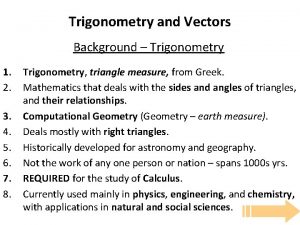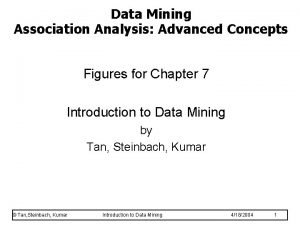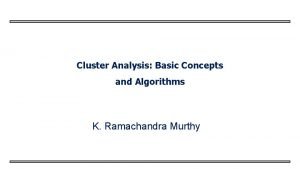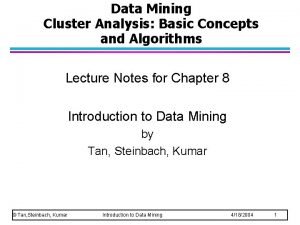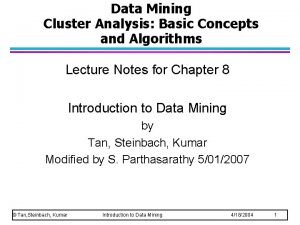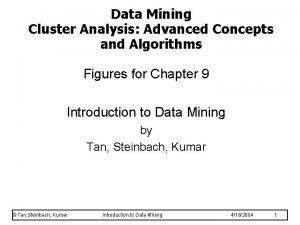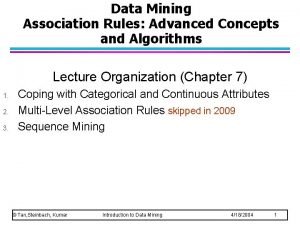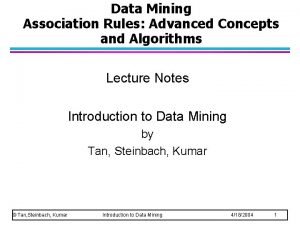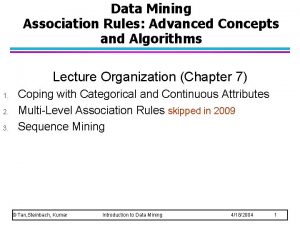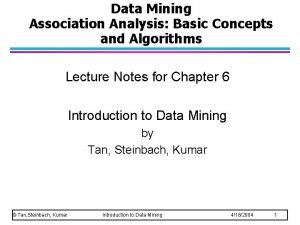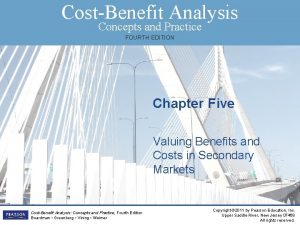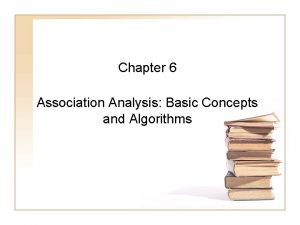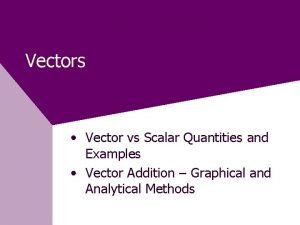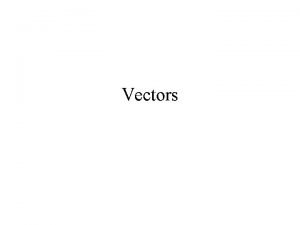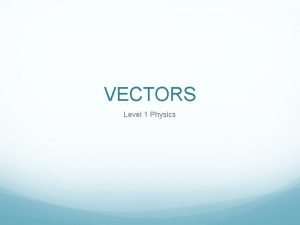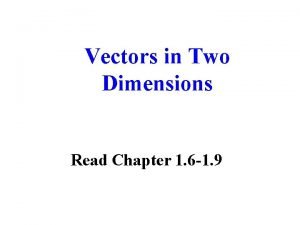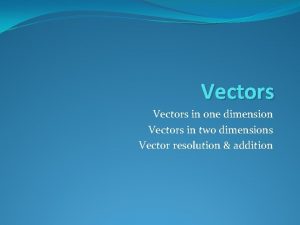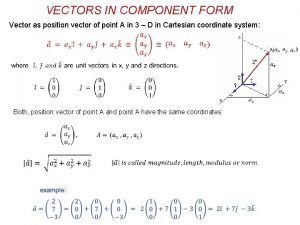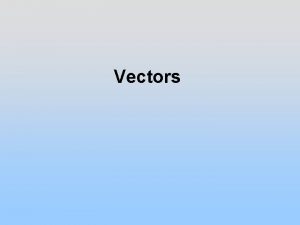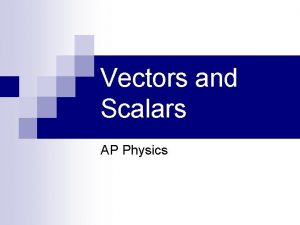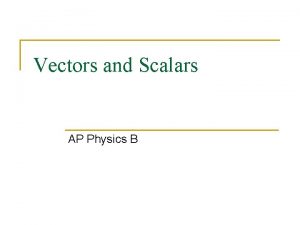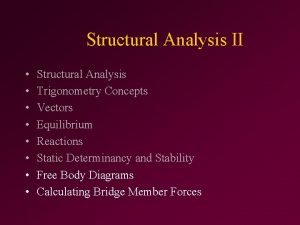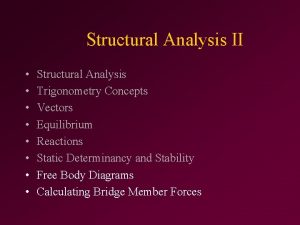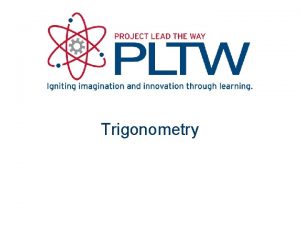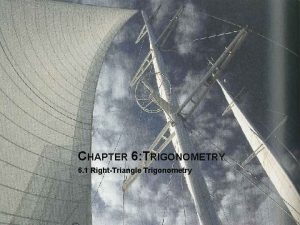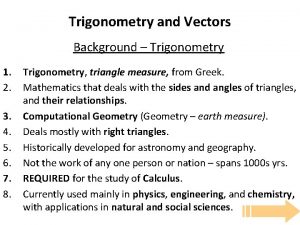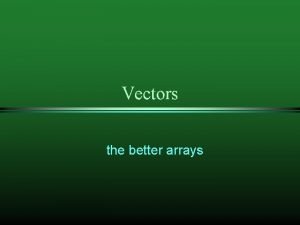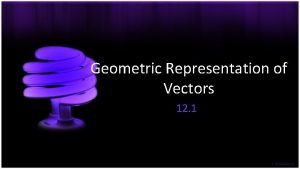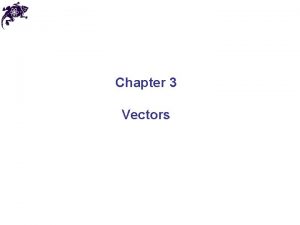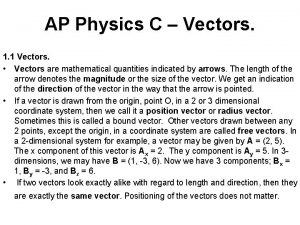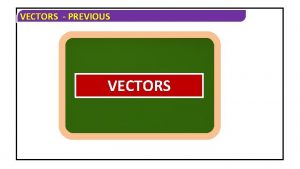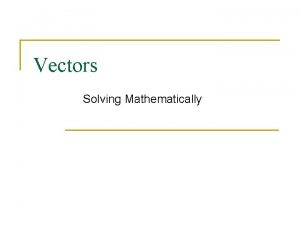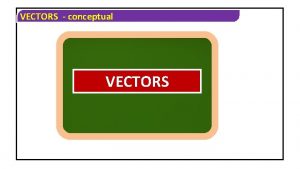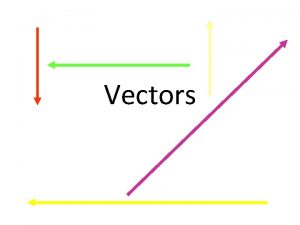Structural Analysis I Structural Analysis Trigonometry Concepts Vectors





























- Slides: 29

Structural Analysis I • • Structural Analysis Trigonometry Concepts Vectors Equilibrium Reactions Static Determinancy and Stability Free Body Diagrams Calculating Bridge Member Forces

Learning Objectives • Define structural analysis • Calculate using the Pythagoreon Theorem, sin, and cos • Calculate the components of a force vector • Add two force vectors together • Understand the concept of equilibrium • Calculate reactions • Determine if a truss is stable

Structural Analysis • Structural analysis is a mathematical examination of a complex structure • Analysis breaks a complex system down to individual component parts • Uses geometry, trigonometry, algebra, and basic physics

How Much Weight Can This Truss Bridge Support?

Pythagorean Theorem • In a right triangle, the length of the sides are related by the equation: a 2 + b 2 = c 2 c a b

Sine (sin) of an Angle • In a right triangle, the angles are related to the lengths of the sides by the equations: c Opposite sinθ 1 = = Hypotenuse a c θ 1 Opposite sinθ 2 = = Hypotenuse b c θ 2 a b

Cosine (cos) of an Angle • In a right triangle, the angles are related to the lengths of the sides by the equations: c Adjacent b cosθ 1 = = Hypotenuse c θ 1 Adjacent a cosθ 2 = = Hypotenuse c θ 2 a b

This Truss Bridge is Built from Right Triangles θ 2 c a θ 1 b

Trigonometry Tips for Structural Analysis • A truss bridge is constructed from members arranged in right triangles • Sin and cos relate both lengths AND magnitude of internal forces • Sin and cos are ratios

Vectors • Mathematical quantity that has both magnitude and direction • Represented by an arrow at an angle θ • Establish Cartesian Coordinate axis system with horizontal x-axis and vertical y-axis.

Vector Example y • Suppose you hit a billiard ball with a force of 5 newtons at a 40 o angle • This is represented by a force vector F = 5 N Θ = 40 o x

Vector Components • Every vector can be broken into two parts, one vector with magnitude in the x-direction and one with magnitude in the y-direction. • Determine these two components for structural analysis.

Vector Component Example y F = 5 N • The billiard ball hit of 5 N/40 o can be represented by two vector components, Fx and Fy x y F = 5 N Fy θ Fx x

Fy Component Example To calculate Fy, sinθ = sin 40 o F = 5 N Fy Θ=40 o Fx = Opposite Hypotenuse Fy 5 N 5 N * 0. 64 = Fy 3. 20 N = Fy

Fx Component Example To calculate Fx, cosθ = Adjacent Hypotenuse cos 40 o = F = 5 N Fy Θ=40 o Fx Fx 5 N 5 N * 0. 77 = Fx 3. 85 N = Fx

What does this Mean? y y Fx = 3. 85 N F = 5 N Θ=40 o Your 5 N/40 o hit is represented by this vector x Fy=3. 20 N x The exact same force and direction could be achieved if two simultaneous forces are applied directly along the x and y axis

Vector Component Summary Force Name 5 N at 40° y Free Body Diagram F = 5 N Θ=40 o x-component 5 N * cos 40° y-component 5 N * sin 40° x

How do I use these? • Calculate net forces on an object • Example: Two people each pull a rope connected to a boat. What is the net force on the boat? She pulls with 100 pound force He pulls with 150 pound force

Boat Pull Solution y • Represent the boat as a point at the (0, 0) location • Represent the pulling forces with vectors Fm = 150 lb Ff = 100 lb Θf = 70 o Θm = 50 o x

Boat Pull Solution (cont) Separate force Ff into x and y components y First analyse the force Ff • • x-component = -100 lb * cos 70° x-component = -34. 2 lb y-component = 100 lb * sin 70° y-component = 93. 9 lb Ff = 100 lb Θf = 70 o -x x

Boat Pull Solution (cont) Separate force Fm into x and y components Next analyse the force Fm • • x-component = 150 lb * cos 50° x-component = 96. 4 lb • • y-component = 150 lb * sin 50° y-component = 114. 9 lb y Fm = 150 lb Θm = 50 o x

Boat Pull Solution (cont) Force Name Vector Diagram x- component y-component Ff y Fm y 150 lb (See next slide) 100 lb 70 o x -100 lb*cos 70 = -34. 2 lb 100 lb*sin 70 = 93. 9 lb Resultant (Sum) 50 o x 150 lb*cos 50 = 96. 4 lb 150 lb*sin 50 = 114. 9 lb 62. 2 lb 208. 8 lb

Boat Pull Solution (end) • White represents forces applied directly to the boat • Gray represents the sum of the x and y components of Ff and Fm • Yellow represents the resultant vector y FTotal. Y Fm Ff -x x FTotal. X

Equilibrium • Total forces acting on an object is ‘ 0’ • Important concept for bridges – they shouldn’t move! • Σ Fx = 0 means ‘The sum of the forces in the x direction is 0’ • Σ Fy = 0 means ‘The sum of the forces in the y direction is 0’ :

Reactions • Forces developed at structure supports to maintain equilibrium. • Ex: If a 3 kg jug of water rests on the ground, there is a 3 kg reaction (Ra) keeping the bottle from going to the center of the earth. 3 kg Ra = 3 kg

Reactions • A bridge across a river has a 200 lb man in the center. What are the reactions at each end, assuming the bridge has no weight?

Determinancy and Stability • Statically determinant trusses can be analyzed by the Method of Joints • Statically indeterminant bridges require more complex analysis techniques • Unstable truss does not have enough members to form a rigid structure

Determinancy and Stability • Statically determinate truss: 2 j = m + 3 • Statically indeterminate truss: 2 j < m + 3 • Unstable truss: 2 j > m + 3

Acknowledgements • This presentation is based on Learning Activity #3, Analyze and Evaluate a Truss from the book by Colonel Stephen J. Ressler, P. E. , Ph. D. , Designing and Building File-Folder Bridges
 Vector trig
Vector trig What is structural functionalism in social science
What is structural functionalism in social science Association analysis: basic concepts and algorithms
Association analysis: basic concepts and algorithms Cluster analysis basic concepts and algorithms
Cluster analysis basic concepts and algorithms Association analysis advanced concepts
Association analysis advanced concepts Cluster analysis basic concepts and algorithms
Cluster analysis basic concepts and algorithms Cluster analysis basic concepts and algorithms
Cluster analysis basic concepts and algorithms Exercise 24
Exercise 24 Business analysis key concepts
Business analysis key concepts Cluster analysis basic concepts and algorithms
Cluster analysis basic concepts and algorithms Chapter 9 kumar steinbach tan
Chapter 9 kumar steinbach tan Association analysis advanced concepts
Association analysis advanced concepts Association analysis advanced concepts
Association analysis advanced concepts Association analysis advanced concepts
Association analysis advanced concepts Association analysis advanced concepts
Association analysis advanced concepts Cost-benefit analysis concepts and practice
Cost-benefit analysis concepts and practice Subset operation using hash tree
Subset operation using hash tree Xss vectors
Xss vectors Vector vs scalar examples
Vector vs scalar examples Adding multiple vectors
Adding multiple vectors A storm system moves 5000 km due east
A storm system moves 5000 km due east Vectors in 2 dimensions
Vectors in 2 dimensions Vectors in one dimension
Vectors in one dimension Vector form
Vector form Vector properties
Vector properties Decomposing vectors
Decomposing vectors A storm system moves 5000 km due east
A storm system moves 5000 km due east What are i and j in vectors
What are i and j in vectors Carl yaztremski
Carl yaztremski Vector trig
Vector trig
